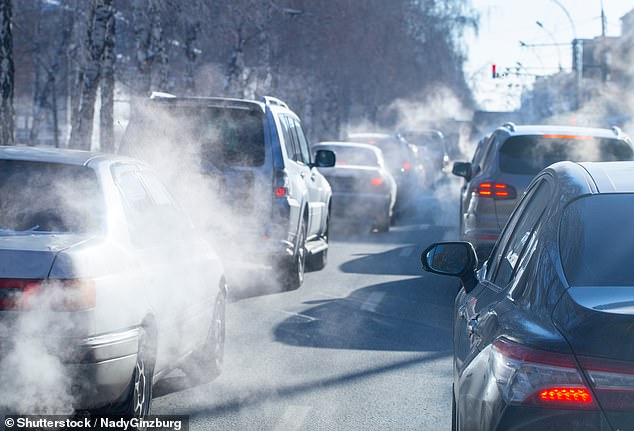Scientists have uncovered yet more evidence to link developing dementia with air pollution—and this interactive map reveals the parts of the UK which are spluttering beneath clouds of toxic smog.
The leading cause of dementia, Alzheimer’s, is estimated to affect 57.4 million people worldwide.
Meanwhile, memory-robbing illness dementia, strikes 982,000 people in the UK, with cases predicted to rise to 1.4million by 2040.
In a fresh analysis, a team of University of Cambridge researchers looked at existing studies connecting cases of dementia to air pollution.
They examined a total of 51 studies that included data from more than 29 million participants globally.
Their findings revealed a positive and statistically significant link between dementia and three different types of air pollution.
These included particulate matter with a diameter of 2.5 microns or less (PM2.5), nitrogen dioxide (NO2) and soot.
PM25 is a pollutant made up of tiny particles, small enough that they can be inhaled in the lungs from, for example, car fumes, industrial emissions and gas stoves.
NO2 is a pollutant released from the burning of fossil fuels. Similarly, soot can be released through trendy wood burners and wood burning stoves.
The researchers found that for every ten micrograms of pollutant per cubic meter (µg/m³), the risk of dementia increased by 17 per cent.
This is concerning as the average roadside measurement of PM2.5 in central London is ten µg/m³.
Meanwhile for every ten µg/m³ of NO2, the risk of dementia increased by three per cent; the average roadside measurement for the pollutant in the Capital is 33µg/m³.
And for every one µg/m³ of soot, which is found in PM2.5, the risk increased by 13 per cent.
The average soot concentrations at roadsides measured in 2023 were 0.93 µg/m³ in London, 1.51 µg/m³ in Birmingham and 0.65 µg/m³ in Glasgow.
Lead author Dr Haneen Khreis said their findings support evidence that long-term exposure to air pollution is linked to the ‘onset of dementia in previously healthy adults’.

The researchers who analysed a large number of studies found a link between air pollution and dementia which blights families across the UK
‘Tackling air pollution can deliver long-term health, social, climate and economic benefit. It can reduce the immense burden on patients, families, and caregivers, while easing pressure on overstretched healthcare systems,’ he added.
In response to the findings, Dr Mark Dallas, a neuroscience specialist at the University of Reading told MailOnline: ‘We still need to understand exactly how these pollutants damage the brain and increase the diversity in dementia research participants.
‘This will help us learn more about how air pollution affects different types of dementia and whether some communities face higher risks than others.’
Dr Isolde Radford, senior policy manager at Alzheimer’s Research UK, added: ‘This rigorous review adds to mounting evidence that exposure to air pollution – from traffic fumes to wood burners – increases the risk of developing dementia.
‘But poor air quality doesn’t affect all communities equally. As this analysis highlights, marginalised groups are often exposed to higher levels of pollution, yet remain underrepresented in research.
‘Future studies must reflect the full diversity of society – because those most at risk could stand to benefit the most from action.’
There have been many suggestions by experts as to why air pollution causes dementia.
Some have proposed it causes inflammation of the brain and oxidative stress—when cells, proteins and DNA is damaged.
These two processes have been strongly linked to the devastating illness dementia, the authors said.
They explained, when we breathe in these pollutants they can trigger these processes through direct entry to the brain.
Air pollution can also enter circulation from the lungs, travelling to solid organs, initiating local and wide-spread inflammation, they warned.
Other studies have shown dementia may also be caused by hearing loss, social isolation and smoking.
Meanwhile, toxic outdoor air pollution has also been linked to lung cancer and colon cancer.
Specifically, the cancers were linked to the pollutants PM2.5, NO2, and ozone—a secondary pollutant created NO2 reacts with others in the sunlight.
The World Health Organisation (WHO) has long demanded countries to combat air pollution, which is thought to kill seven million globally.
